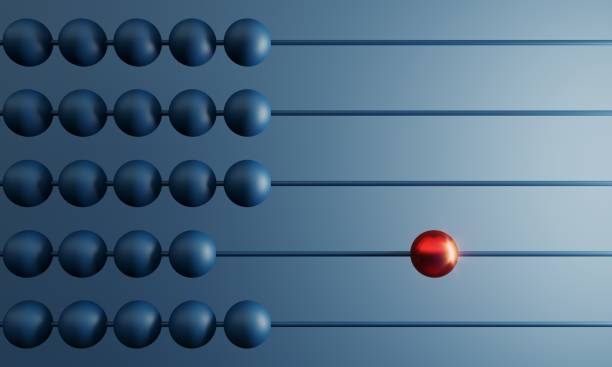How Does Mortgage Refinancing Work?
How does mortgage refinancing work? Are you a homeowner seeking out means to reduce the interest rates on your current mortgage using the most convenient ways?
Are you house poor and need to get extra cash from your home?
Do you want to reduce your mortgage payments and shorten your loan term?
If a larger part of your monthly income goes towards interest rather than paying off your mortgage balance, then refinancing would work best for you.
What’s The Catch With Refinancing? What Does It Mean To Refinance A House?
Refinancing a mortgage means taking out a new loan to pay off your initial mortgage balance. It is the same as replacing your original mortgage with a new loan which may have different terms and conditions.
The new loan that you are taking would ideally have a lesser interest rate. Actually, refinancing is done to allow borrowers to get a better interest rate.
You can leverage your home using a ton of refinancing options. Your mortgage lender pays off your remaining debt on the old loan using the new loan you just obtained.
You may choose to refinance your home with your current lender or a new lender; though the latter may end your relationship with your old lender.
Either way, you’re looking for the best options for ‘you’, not what your lender thinks, or how your mortgage decisions can favor your lender.
But how can you do that?
This article contains how refinancing a mortgage works and key points you need to know about home loan refinance.
How Does Mortgage Refinancing Work?
You can begin the process of refinancing a mortgage by shopping for available home loans and comparing their interest rates.
You should also consider other landing terms and how long your refinancing can take to get the best offer on your loan. Most refinance companies can take about 30 to 45 days to complete your refinance processes.
Be very cautious about prepayment penalties in the loaning terms because it would prompt issues when you pay off your mortgage too early or opt in for another refinance.
Also, when going through your refinance plan, be watchful of the closing costs. If the approval on your first loan causes your credit score to improve, it would be much easier for you to qualify for another loan at more favorable terms.
The refinancing process is less complicated than that for home buying because this time, you are quite knowledgeable of the system and you’re basically comparing loan terms.
A Closer Overview Of How Refinancing A Home Works
The Application Process
Of course, this would be the first thing you would do if you ever plan on refinancing your home.
Here, you would go through aside array of options on the different types of refinancing that may work best for you. Your lender would ask for the same documents that you presented as a first-time homebuyer.
Your current income, assets, liabilities, loans, and debts, along with your credit score will determine whether you qualify to get a refinance and can pay back the loan.
You might want to keep papers on your tax returns handy in case your lender starts demanding that you pay tax rates on the property.
Locking In Your Interest Rate
Once you have been approved for mortgage refinancing, the next step to take is to lock your interest rates.
Floating your rates is when you don’t lock in your rates, though cheap, it can be very risky.
You don’t want other lenders and brokers snooping around your deal with your new lender. If this happens, you may be at risk of losing the loan to another client.
You can lock in your rates between 15 to 60 days so the interest rate and loan terms don’t change before the loan closes.
Though rate locks are smart moves, they actually cost you money based on your location, the loan type, and your lender. A shorter rate lock gives you even better rates than one locked for over 60 days.
Underwriting
Underwriting is when your mortgage lender looks you up to verify the accuracy of the financial statements you submit.
The lender does a refinance appraisal to find out the mortgage options that are available to you. In doing this, your home value is calculated by verifying the details of your property.
If you are going for a cash-out refinance, which basically means refinancing your home to get cool cash from it, then your lender also estimates how much value your home can offer (monetarily).
But if you only wish to reduce your mortgage payment, then you would need to have enough home equity to back you up against private mortgage insurance and be qualified for certain loan options.
Home Appraisal
An appraiser estimates your house value. Of course, you need to know the worth of your home to be able to refinance. That’s what an appraisal is all about.
Take, for instance, if your house was made of steel and iron, you would want it to look like polished gold (metaphorically).
But actually, you need to make your home look upbeat with a few upgrades and repairs to get a better appraisal.
When your appraiser is done with the checks, he gives you a statement showing your home value. Underwriting is completed when your home value is equal to or more than the loan amount you want to refinance.
Ideally, you would want your home value to be higher so that you can offset some of the closing costs for your new loan using the balance or cash out some money.
Should in case your home value is less than your loan amount for refinancing, you can reduce the sum you want to get through refinancing or cancel out entirely.
You can also use cash-in refinance to add more cash to the deal so you can meet up with the current transaction. Next up is mortgage closing.
Closing Your New Loan
Before closing your new loan, your lender hands you a Closing Disclosure. You have to go through this document properly to see if the terms align with what you previously agreed on.
The closing for a refinance is attended by the lender, borrower, persons on the loan title, and a representative each from the mortgage lender or title company and the borrower.
The lender gives you money if it is a cash-out refinance. The reverse is the case for a cash-in refinance.
Read Also; Mortgage Brokers vs. Banks
Reasons Why People Refinance Their Homes
There are a variety of reasons to refinance your mortgage. You can get some cash using a cash-out refinance, a better interest rate, a reduced monthly payment, add someone to a mortgage as seen in marriages, and remove someone from a mortgage in the case of divorce.
We have properly detailed these reasons below.
To Change Your Loan Term
You can qualify for a lower interest rate if you reduce your loan term. For instance, if your initial loan term was 30 years and you reduce it to 20 years.
With your 20-year mortgage, you can pay less on the overall interest and potentially lower your monthly payment.
To Change Your Loan Type
There are many reasons a different type of loan may benefit you. Perhaps you originally got an adjustable-rate mortgage (ARM) to save on interest, but you’d like to refinance your ARM to a fixed-rate mortgage while rates are low.
Maybe you finally have enough home equity to refinance your FHA loan to a conventional loan and stop paying for private mortgage insurance.
To Change Your Interest Rate
In an Adjustable-rate mortgage, the interest rates are always changing. To get lower interest rates, refinancing would be the choicest idea. Low interest rate results in lower monthly payments over the life of your loan.
If you move from an adjustable-rate mortgage to a fixed-rate mortgage, you can avoid market fluctuations.
You can also reduce your interest rates and payments if the market performs well such as seen when the market rates drop.
Cashing Out Your Equity
If you opt in for a cash-out refinance, you could borrow more money than you owe on your home loan and save the rest.
If your home value increased over time, for instance, if you added some fixtures and adjustments, you may have enough equity for other expenses such as home improvements or debt consolidation. However, you may incur other tax implications with that.
With a cash-out refinance you can be able to buy out your ex-spouse in a divorce. This means you can assume ownership of a property that both of you formerly owned.
Read Also: 25 Mortgage Questions You Should Know The Answer To
Disadvantages Of Refinancing Your Mortgage Loan
Though there are lots of benefits of mortgage refinancing, there are also pitfalls in the process:
- A lengthened loan term can result in more interest payments
- Cashing out part of your equity can increase the loan amount on your new mortgage loan, and ultimately your monthly payment.
- That you’d get a better loan after refinancing is still a probability. Market rates can spike up and you end up with even higher rates on your new loan.
Different Types of Mortgage Refinancing
There are three different types of refinance loans that are quite popular in the mortgage market.
These include Rate-and-term, cash-out, and cash-in.
Rate-and-Term Refinance Loan
The goal of this mortgage refinance is to change the interest rate, loan term, or both on your mortgage without changing the initial loan amount.
Most homeowners choose to refinance their mortgage loans using this type of loan especially when they want to switch from an adjustable rate to a fixed-rate mortgage.
Cash-Out Refinance Loan
Take up a higher loan amount to cash out a portion of your home’s equity. The amount you cash out is equal to the amount that is added to your initial mortgage balance.
A cash-out refinance is very helpful for homeowners who need money urgently at the expense of a higher monthly payment and interest rate.
Cash-In Refinance Loan
A cash-in refinance though not very common is when a homeowner refinances their mortgage loan by adding more money to pay off the debts left from the mortgage balance.
Homebuyers who consider cash-in refinance are typically trying to avoid the impounding costs of private mortgage insurance and to pay off their loans quickly.
Refinancing FAQs
How Can I Apply For A Mortgage Refinance?
The application process for refinancing your he is similar to the steps you took when you first bought your house. (Further details on this have been highlighted above)
How Do I Qualify For Mortgage Refinancing?
The processes followed to qualify for a mortgage refinance are similar to those for obtaining a new mortgage loan. The payment history of your current loans, financial situation, overall debts, income, home value, and credit score, among others, are evaluated by lenders before your loan refinance can be approved.
How Much Does It Cost To Refinance Your Mortgage?
Refinancing mortgage costs between 3% – 6% of the total home loan and depends on your home value and the terms of your lender.
You may be lucky to get a no-closing cost to refinance, where the closing costs are not paid during loan closing but through the life of the loan.
How Will Refinancing Affect My Credit?
Refinancing a mortgage loan can lead to a hard inquiry on your credit report, which may reduce your credit scores. This happens when there are multiple credit inquiries in a short period (14 – 45 days) on your credit report.
Also, if you shop for available interest rates and mortgage refinance for a long while or fail to make payments on your previous loan during the refinancing process, there may be a negative impact on your credit history.
When Should I Refinance My Mortgage?
When you are home poor when the current interest rates are not favorable when you want to change your loan term or loan type.
It is ideal to use a mortgage refinance calculator to find out if it is a loan modification, refinancing, or a second mortgage that you need. The difference between a mortgage refinance and a loan modification is that in mortgage refinancing, you get a new mortgage while a loan modification changes the current terms of your mortgage.
Refinancing differs from a second mortgage in that, a refinance replaces your previous mortgage while a second mortgage is just a second loan.
How Does Refinancing Work With Equity?
When you buy a home using a mortgage, you make a down payment to the home seller or Mortgage lender for it.
As you pay monthly installments for the loan, you slowly gain equity in the house. The amount from your total mortgage amount that you have paid overtime is the home equity.
The more equity you have on your home loan, the easier it is for you to take a new loan for refinancing.
How Soon After Closing Can I Refinance?
Refinancing can be done between 30 days to 1 year from the closing date depending on your loan type. Your outstanding mortgage balance and home equity determine how often you can refinance.
Hope You Found What You Need
Now we have concluded this article, Was it mortgage refinancing that you needed or something else?
Let me guess, a second mortgage or a loan modification.
If refinancing can work as a financial tool for your home, are you going to opt for a cash-in refinance, a cash-out refinance, or a rate-and-term refinance?
Let me know in the comments section below





